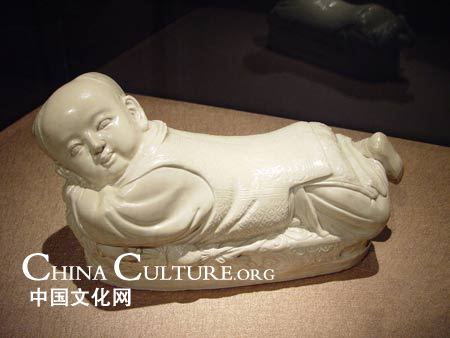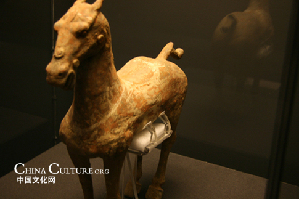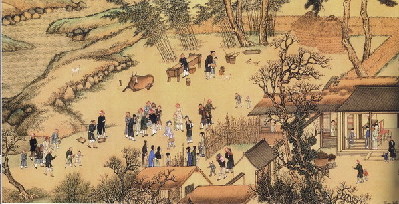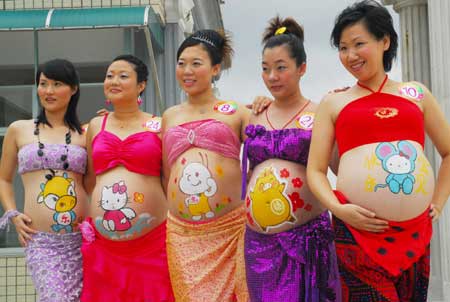| Home > Living in China > Art |
Chinese culture: ancient literature
John Woo's historical epic, "Red Cliff", released last month depicted the Battle of Red Cliffs in 208 AD, a major theme in a Chinese classic novel, Romance of the Three Kingdoms.
Here are some facts about China's ancient literary works.
POETRY:
BOOK OF SONGS: China's first anthology of poems and earliest literary achievement. It contains 305 classical poems from the early Western Zhou Dynasty (1046-771 BC) to the middle Spring and Autumn Period (770-476 BC). Legend has it that Confucius (551-479 BC) compiled the book in the sixth century BC.
SHI: A kind of poetry that usually has five or seven characters in a line. The form peaked in the Tang Dynasty (581-907 AD). The period alone can be credited with thousands of poets who left more than 50,000 enduring poems. The prominent authors were Li Bai, also known as Li Po to Western readers, Du Fu and Bai Juyi. English translations of their works are available.
CI: Known as Lyrics, it was a new form of poetry that took shape in the late Tang Dynasty, but it did not reach its heyday until the Song Dynasty (960-1279 AD) when it was widely set to music.
Prominent writers of Ci include Li Qingzhao, who is regarded as the premier woman poet, and Su Shi, or Su Dongpo, among others.
FOUR MASTERPIECE NOVELS: The novel as a literary genre germinated in the Wei, Jin and the Northern and Southern Dynasties (220-589 AD). It bloomed during the Ming (1368-1644 AD) and Qing Dynasties (1644-1912 AD). Four novels are commonly recognized as the greatest in classical Chinese fiction.
-- THE ROMANCE OF THE THREE KINGDOMS: The narrative turns history into epic and has educated and entertained readers with unforgettable examples of martial and civic virtue, personal fidelity and political treachery.
Its author, Luo Guanzhong (1330-1400 AD), portrays a fateful moment at the end of the Han Dynasty (206 BC- 220 AD).
-- TALE OF WATER MARGIN: Also known as Outlaws of the Marsh. This great novel by Shi Nai'an (1296-1371 AD) was set against a fading Song Dynasty plagued with corruption and bogged down in political and social turmoil. To transform society and make it more equitable, 108 heroes joined together in Liang Shan, east Shandong Province, to oppose the government and spread justice.
-- JOURNEY TO THE WEST: A combination of parable and comedy, the story tells of a Buddhist monk and several animals with human characteristics who traveled west to India in search of Buddhist scriptures. The animals are celestial beings in mortal form, and they have magical powers that protect them from goblins and evil spirits.
The author, Wu Cheng'en (1500-1582 AD), created an imaginary world that gives readers a glance of the different sides of human nature.
-- DREAM OF RED MANSIONS: Also called Dream of the Red Chamber, by Cao Xueqin (1715-1763 AD). It is basically a tragic love story between a boy named Jia Baoyu and a girl, Lin Daiyu.
Baoyu is the lifeblood of the Jia family, while Lin is his cousin who stayed with his family after being orphaned. The story ends with Baoyu's arranged marriage to another girl, Xue Baochai, and Daiyu's death.
The novel survived the centuries because of its panoramic description of the lives of people of various levels.
Art
 more
moreClassic Chinese Handicraft:
Porcelain pillows, as classic Chinese handicraft,

Chinese Treasures Returned from
As witness of Chinese culture and custom, countless treasures

The lost legacy: classical music
Accompany by the long history of China, Chinese classical music

Customs
 more
moreChinese Kungfu
Kungfu Taste: Learn Martial Art in Shaolin Temple
The mention of Shaolin Temple conjures up images of a quiet and
Keet Kune Do will reappears on screen: BRUCE Lee and
The Legend of Bruce Lee is shot by China Central Television
The Road to the Olympic Games for Wushu
Wushu, also called kungfu, martial arts, is attracting more and more




 print
print  email
email  Favorite
Favorite  Transtlate
Transtlate 
